It’s been more than three years since I first started testing my oil palette colors. My goal with these ongoing color stability tests is to find out to what degree the colors might change over time. If you read my previous post about the tests, you’ll remember that my initial interest was in comparing the effects of walnut oil to that of linseed oil in artists’ paint.
I know, I know. You’re thinking how technical and boring this post sounds already. You may be right. Feel free to switch over to your Instagram feed to stay awake. 🙂
I’ve recently become a brand ambassador for M. Graham & Co. They are one of the few companies who make their oil paints with walnut oil. Most other brands use linseed oil. Some use safflower oil, but we’ll save that for a possible future post. For now, we’ll just focus on walnut oil vs. linseed oil. Two things to keep in mind:
- Walnut oil doesn’t yellow over time the way linseed oil does, meaning truer colors.
- Walnut oil allows more pigment load than linseed oil, meaning colors with more tinting strength.
My Titanium White test from 2015 produced some relatively dramatic yellowing in the linseed oil brand. But so far the other colors I’m testing haven’t changed much. However, I am seeing some slight darkening / graying of some of the colors in the tests. I’ll include images of those and some descriptions below. Remember that when I initially laid down these colors on my test panels in 2016, I did my best to make the color swatches match each other visually. That way any changes over time would hopefully be apparent.
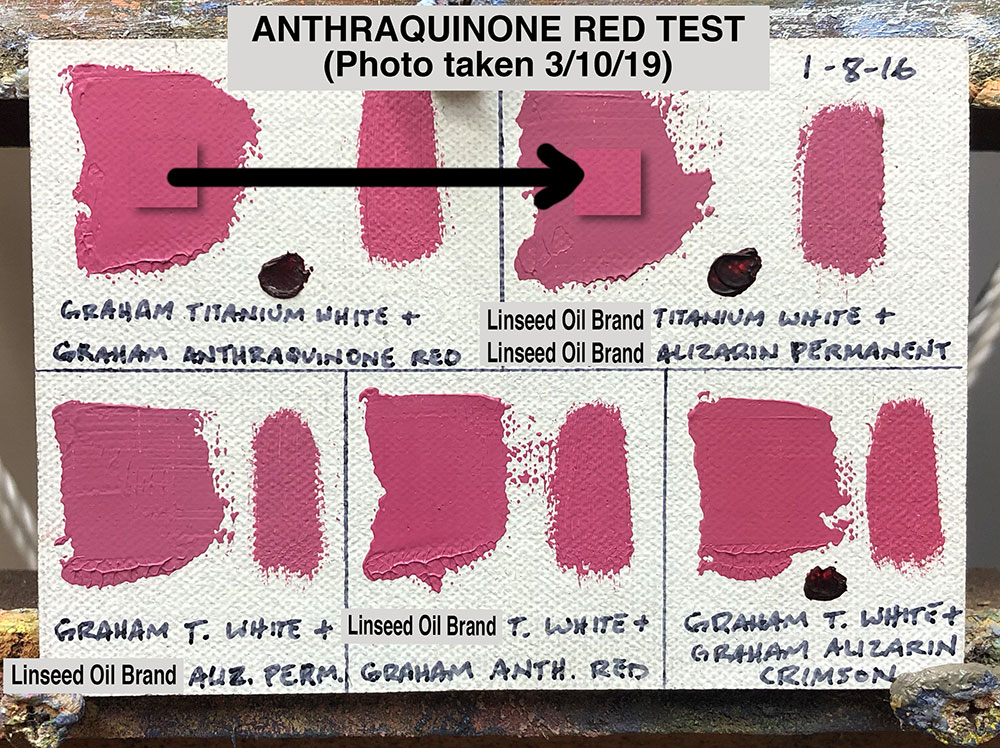
As you can see above, the biggest shift seems to be happening with the test of Anthraquinone Red (M. Graham walnut oil) vs. Alizarin Permanent (linseed oil brand). The linseed oil brand has definitely darkened and lost some saturation. But I happen to know that the particular brand I tested has changed the pigment they use to make that particular color in recent years so perhaps that affected its permanence.
Also on this particular color test, I decided to include a square of M. Graham’s Alizarin Crimson. (In the lower right corner.) Of all the colors I tested, I expected this one to shift the most because of its lightfast rating of III. (A lightfast rating of I on a paint tube’s label is considered to be the most lightfast.) Surprisingly, M. Graham’s Alizarin Crimson doesn’t seem to have changed color at all.
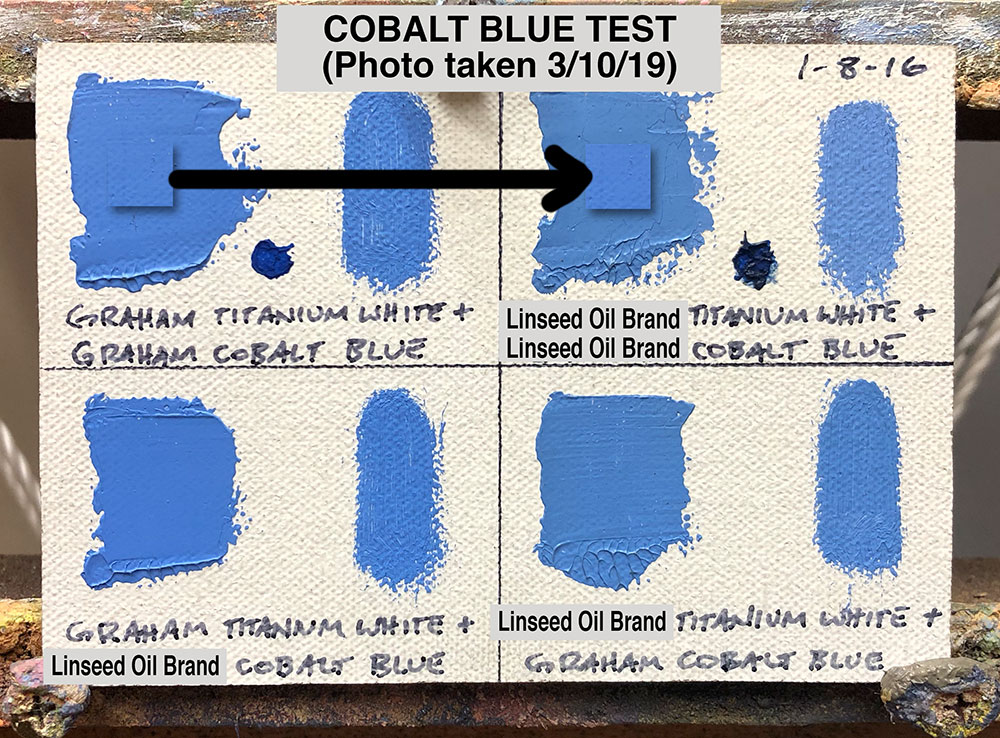
Cobalt Blue’s color shift in the linseed oil brand is also noticeable. It has lost some saturation compared to M. Graham’s version.
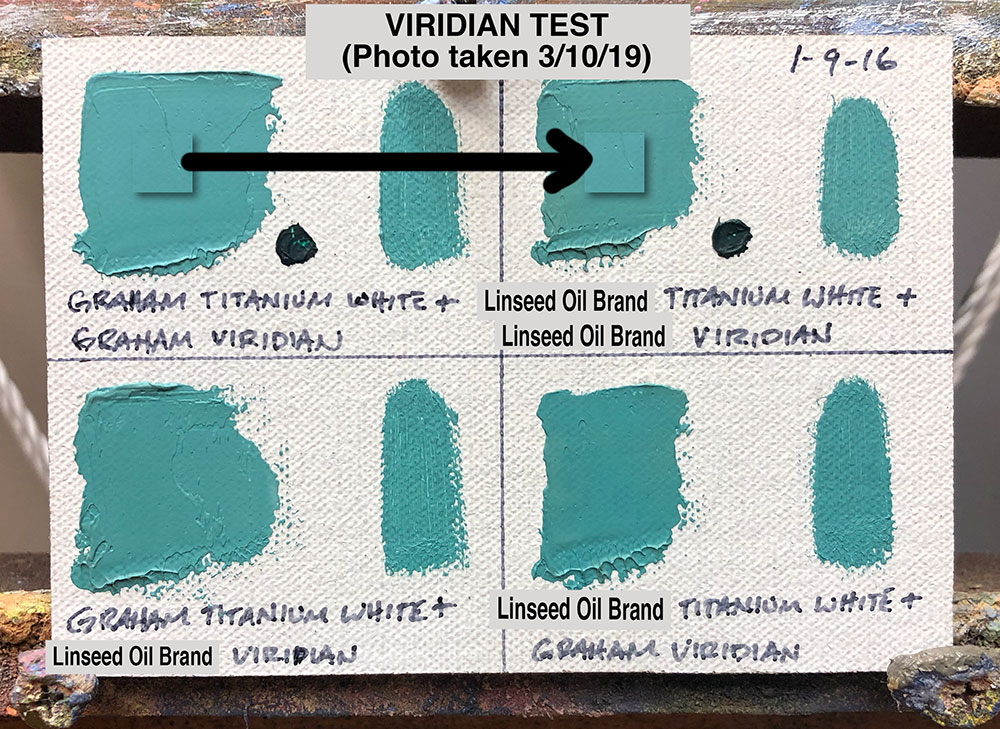
The linseed oil brand of Viridian has darkened slightly and yellowed a bit.
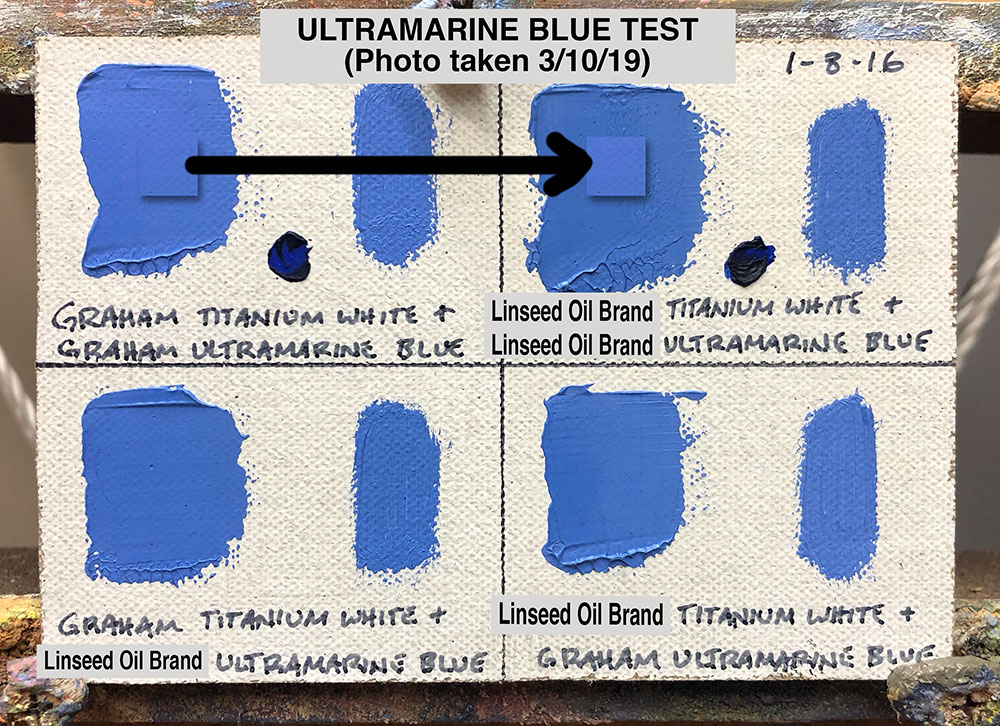
The Ultramarine Blue test is also showing signs of the linseed oil brand darkening a little over time compared to the M. Graham color.
So what does this mean?
Because of the results of my Titanium White test in 2015, I was worried that the addition of a linseed oil based Titanium White to my other palette colors would cause all the colors to yellow. Thankfully, as you can see, the changes are relatively slight at this point in the test. And the other colors I tested (not pictured) have shown even less noticeable change. (Cadmium Lemon, Yellow Ochre, Cadmium Orange, Transparent Oxide Red, Dioxazine Purple and Ivory Black.)
I would think that once any of these colors are mixed with others and applied to an actual painting, it would be almost impossible to discern any changes over time. But if my colors are going to be changing over time, I want to know about it if I can. And try to avoid it.
So far, the M. Graham & Co. oils seem to be lasting really well. I will keep an eye on them and let you know of any further changes in my ongoing color stability tests.
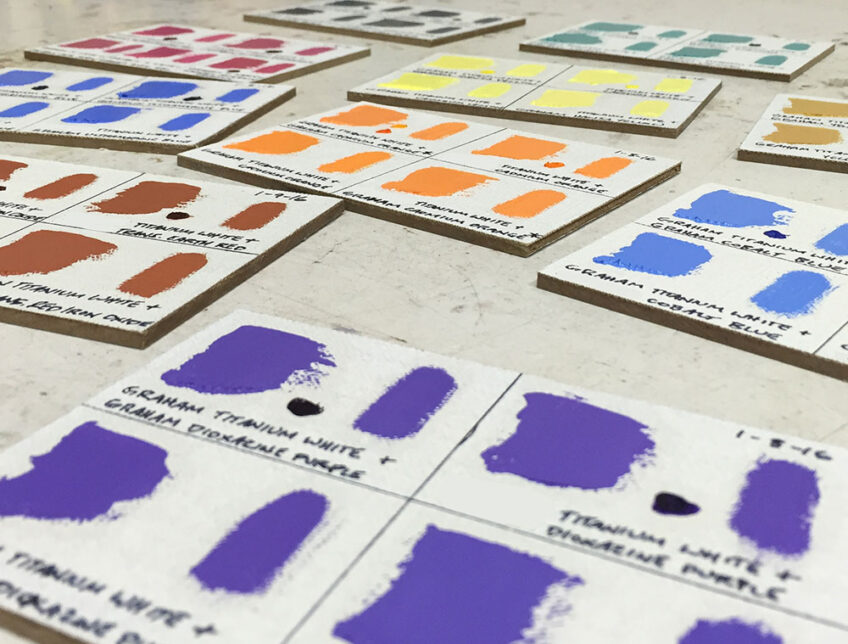
12 Responses
Janet
I am using walnut oil and mainly m graham paints now. Available in a local shop. I really like how the walnut oil moves the paint and the consistency of the paint. I threw my Liquin and linseed oil away. I’m a convert. You are right about pigment load. I can get thinner and juicier strokes without paint color getting more transparent. Resumed painting after a 25 year lapse. Enjoying it more now.
Dan Schultz
So glad you’re enjoying the Graham paint! It’s good stuff.
Patti Vincent
I have a lot of linseed based oil paint. Is it okay to use both linseed and walnut oil based paint on a painting? Or does it need to be linseed or walnut oil? I love M. Graham’s gouache! Thanks Dan!
Dan Schultz
Yes Patti, it’s fine to mix linseed-oil-based paint with walnut-oil-based. 👍
Sergio Lopez
Have you talked at all with George O’Hanlan from Natural Pigments at all? They have done all sorts of lightfastness tests and so he has a ton of relevant info for everyone that he is trying to put out there.
Dan Schultz
I wasn’t aware of him Sergio. I’ll look him up.
Susan
I gave away all of my linseed paints and sm onlh using M.Graham and walnut oil.
Can hardly wait to take a class where everyone is on board w M Graham and walnut oil. I’m just allergic to anything else.
Gayle Martin
Thank you for sharing this valuable information. Let me know if you decide to use Flake or Flemish white.
Donna
I use water based oil paints. If I use walnut oil with them, can I still clean my brushes with water. The company offers two kinds of walnut oil, walnut oil medium and walnut oil alkali oil medium. What is the difference.
Dan Schultz
Hi Donna, I haven’t used water based oils much, so I’m not sure if you’d still be able to clean up with water if you add walnut oil. You might try contacting M. Graham & Co. directly about that. You can find the difference between their walnut oil medium and their walnut alkyd medium here: https://mgraham.com/artists-colors/artist-mediums/
Robert Hopkins
Thanks for sharing this information, Dan!
I stepped away from oil painting due to my concerns of flash points of oil painting and burning my house down. I was hoping that using M. Graham walnut oil paints and mediums would avoid this risk. But, after reading more on the Internet (everything is true!) walnut oil seems to have the same issue of flashpoint issues that linseed oil has too (somewhat higher though). Even on the M. Graham website they state to: “laying out your rags and towels containing walnut oil and/or walnut alkyd in a single layer until dry”.
My question is how do we handle this problem of drying the walnut oil in a realistic manner that makes sense? How do you handle your rags and paper towels, and cleaning of a used pallet? I am currently using Richeson disposable paper palette pads to mix on.
This is worth a blog post from a trusted artist with a lot of experience! Thanks again, Dan! I look forward to your reply.
Dan Schultz
I think the easiest way to handle used rags or paper towels is to use a metal trash can with a lid. I make sure the lid is on my trash can whenever I leave my studio just in case. But I’ve never felt too concerned about spontaneous combustion. I almost always paint wet-into-wet, so I don’t usually need to add walnut or linseed oil into my paint, so my paper towels that go into the trash are mostly paint with a little solvent.
And I wouldn’t think a used palette would be a danger. It’s just drying paint, the same as a painting and we don’t worry about paintings catching fire on their own.
Hopefully that’s helpful!